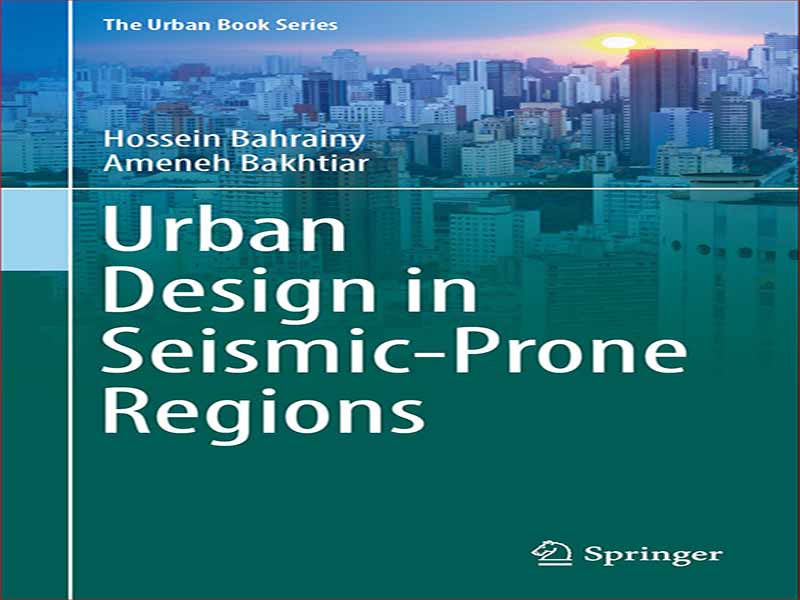- عنوان کتاب: Urban Design in Seismic Prone Regions
- نویسنده: Hossein-Bahrainy,-Ameneh-Bakhtiar
- حوزه: شهرسازی
- سال انتشار: 2022
- تعداد صفحه: 343
- زبان اصلی: انگلیسی
- نوع فایل: pdf
- حجم فایل: 23.0 مگابایت
میتوان طراحی شهری را تصمیمها و اقدامات هدفمندی تعریف کرد که هدف آن برقراری نظم عملکردی و رسمی در محیط فیزیکی است. بدیهی است که این تعریف بر برخی عناصر انتزاعی و بدون ارزش مانند تصمیمات و اقدامات مربوطه و دستورات رسمی و کارکردی مورد نظر دلالت دارد. در واقع، ماهیت، ویژگی ها و تعابیر این عناصر معمولاً از یک زمینه به زمینه دیگر تغییر می کند. هدف کلی طراحی شهری به عنوان یکی از حوزه های نسبتاً جدید دانش، برقراری نظم در محیط فیزیکی بوده است. با این حال، تفسیر امروزی نظم به شدت تغییر کرده است. به این دلیل که محیط شهری پیچیدگی بی سابقه ای پیدا کرده است. فقدان نظم در شکل و همچنین فعالیت های محیط های شهری منعکس می شود. از تکنیک ها و روش های طراحی شهری می توان برای ایجاد تغییرات و اصلاحات در محیط ساخته شده به منظور ایجاد نظم مطلوب در شکل و فعالیت های شهری استفاده کرد. جاه طلبی برای کنترل «بی نظمی»، «آشوب»، «آلودگی»، «سرایت»، «انحراف»، «بیماری» و غیره، از طریق کنترل فضایی و اجتماعی (که شامل سازماندهی و برنامه ریزی می شود) و از طریق سیاست های مقررات و محدودیت می تواند در طول تاریخ شهرسازی ردیابی شده و بر رویکردهای امروزی به برنامه ریزی و طراحی شهری حاکم است. تجزیه و تحلیل آسیب پذیری و ریسک لرزه ای در برنامه ریزی و طراحی شهری به منظور کاهش ریسک لرزه ای در شهر است. طراحی شهری به عنوان یک رشته و رویه مشروع امروزی به توانایی و ظرفیت آن در مواجهه با مسائل روز جامعه و ارائه راه حل های مناسب برای آن مشکلات در حد معقول و در چارچوب ابزارها و تکنیک های طراحی شهری بستگی دارد.
We can define urban design as the purposeful decisions and actions which aim at establishing functional and formal order in the physical environment. It is obvious that this definition implies some abstract and value-free elements such as the decisions and actions involved and the formal and functional orders sought. In fact, the nature, characteristics, and interpretations of these elements normally change from one context to another. The general purpose of urban design, as one of the relatively new field of knowledge, has been to establish order in the physical environment. Today’s interpretation of order, however, has changed drastically. This is because the urban environment has gained unprecedented complexity. Lack of order is reflected in the form, as well as activities of the urban environments. Urban design techniques and methods can be used to make changes and modifications in the built environment in order to establish desired order in the urban form and activities. The ambition to control “disorder,” “chaos,” “pollution,” “contagion,” “deviation,” “sickness,” etc., through spatial and social control (which includes organization and planning) and through regulation and restriction policies can be traced throughout the history of urbanism and governs today’s approaches to urban planning and design. Vulnerability and seismic risk analysis in urban planning and design intends to miti-gate seismic risk in the city. Urban design as a legitimate discipline and practice today depends on its ability and capacity to deal with the current issues society is facing and offer appropriate solutions to those problems, to the extent plausible and within the framework of the urban design tools and techniques.
این کتاب را میتوانید از لینک زیر بصورت رایگان دانلود کنید:
Download: Urban Design in Seismic Prone Regions
































نظرات کاربران